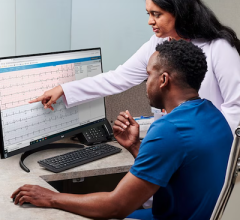
The cardiology department at Hunterdon Medical Center in Flemington, N.J., wanted to eliminate cumbersome paper files and centralize access to patient records using a new, full-featured cardiovascular information system (CVIS).
Hunterdon Medical Center, a tertiary care center in Flemington, N.J., was looking to update its current cardiovascular imaging software and processes to meet the expanding healthcare demands of the growing central New Jersey region. The medical center deployed McKesson Cardiology to create a single Cardiovascular Information System (CVIS). This new system provides physicians with anytime, anywhere access to studies that can be launched from within a single electronic medical record (EMR).
Challenges
Along with a busy 178-bed hospital, Hunterdon Healthcare includes more than two dozen locations including physician practices, urgent care centers, and outpatient imaging facilities through the region. Creating a single patient record appeared challenging, but was seen as a necessity to drive a transformation in how they delivered care to their patients.
Cardiovascular studies were stored in several repositories including a radiology PACS system, as well as cath lab systems scattered through the area. In addition, referring physicians and hospitalists within the medical center were forced to access cardiology images and reports from multiple sources.
“The physicians had to access multiple systems to ascertain a complete cardiology chart for their patient,” said Bryan Welsh, Hunterdon Healthcare’s imaging informatics manager. “It was a process that was too time consuming and caused frustrations.”
A centralized CVIS solution was needed to bring patient data together in one place. The goal was to improve efficiency through an automated process that could help reduce costs and wasted time spent retrieving studies from different locations. The new system could also help improve patient outcomes by speeding diagnosis and ensuring appropriate treatment was implemented quickly.
“We really needed to get rid of the whole paper process,” said Karen Meyer, CVIS system administrator. “It makes it easier to send reports to physicians through a single electronic system. During the selection process we were looking for a system that could incorporate our whole cardiology infrastructure into one area. Our goal was to make physicians’ lives easier so they could reduce their report turnaround times and from a system administration standpoint make IT’s life easier as well.”
Answers
Following a competitive selection process, the McKesson team began working with Hunterdon Healthcare to implement the new solution. The process began in early 2015 with the integration of modalities such as echocardiogram, electrocardiogram (ECG) and nuclear medicine. This was followed by a second phase that included cath and vascular labs along with other areas of the hospital.
One of the prime drivers during the selection process was McKesson’s ability to bring together all of Hunterdon’s cardiovascular imaging data into a single point of access.
“Everything we do is pulled into the McKesson CVIS system,” said Meyer. “So there’s one place for the physicians to see the whole patient history in that single location.”
The system created a single point of access in which physicians could easily locate and pull up images and studies needed for patient treatment. With integration with the vendor neutral archive (VNA), the application is launched from within the EMR.
“Image enabling our EMR was a huge step forward in helping streamline the clinical workflow and helping us achieve Hunterdon’s strategic objectives, including Meaningful Use Stage 2 certification” said Welsh.
Results
With the McKesson CVIS in place, Hunterdon Healthcare has achieved a wide range of efficiencies and cost savings. With the elimination of paper records, the organization has reduced staff time that was once directed to maintaining and retrieving files. With the addition of a charge capture application, billing for procedures has become both timely and automatic.
“Previously, paperwork for charges would be put into a pile, and it became difficult to manage,” said Meyer. “Now, it’s an automated process so when the patient’s procedure report is finalized, those charges flow directly to the billing system. You don’t have a person manually entering the charges. That’s really been a great plus, and has helped us increase our revenue.”
Referring physicians are now receiving reports within 24-hours — a 90 percent improvement. This was made possible through the solution’s structured data reporting for echocardiography, vascular ultrasound, nuclear cardiology, cardiac and peripheral catheterization, and ECG management.
“We’re able to link up to our VNA which communicates back to our EMR,” said Meyer. “Physicians have the complete patient record in our EMR including images.”
For more information: www.mckesson.com


 November 06, 2025
November 06, 2025 









